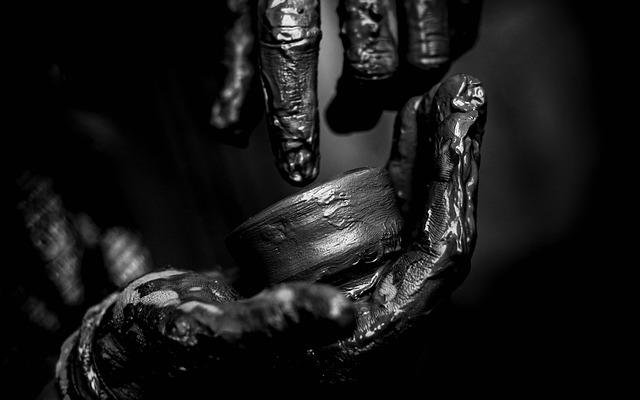In the bustling world of modern cinema, where every second counts and adrenaline reigns supreme, filmmakers wield a unique tool that defies the very essence of time: slow motion. This cinematic technique, often employed to amplify the drama and intensity of action sequences, invites audiences to savor every punch, leap, and explosion in exquisite detail. As bullets fly and heroes defy gravity, slow motion transforms fleeting moments into captivating spectacles, allowing viewers to experience the pulse of action with heightened clarity. In this exploration, we delve into how slow motion not only enhances the visual feast of contemporary films but also deepens our emotional connection to the unfolding narrative.
Unveiling the Artistry: Slow Motions Role in Cinematic Storytelling
Slow motion is a powerful tool in the filmmaker’s arsenal, transforming high-octane action sequences into breathtaking visual poetry. By decelerating time, directors highlight intricate details that might otherwise go unnoticed, allowing audiences to fully appreciate the choreography and emotion behind each movement. This technique not only accentuates the tension and drama but also creates a sense of immersion, drawing viewers deeper into the narrative.
- Emphasizing Emotion: Slow motion captures the subtle nuances of facial expressions, conveying the emotional stakes at play.
- Highlighting Detail: Every splash, spark, and ripple is brought into focus, enhancing the visual storytelling.
- Building Suspense: By stretching moments of anticipation, slow motion heightens the audience’s sense of expectation.
- Showcasing Skill: It reveals the precision and artistry involved in complex fight sequences and stunts.
Through these artistic choices, slow motion elevates action scenes from mere spectacle to profound storytelling, inviting viewers to savor each frame and engage with the film on a deeper level.

Capturing the Unseen: How Slow Motion Amplifies Emotional Impact
In the fast-paced world of cinema, slow motion serves as a powerful tool to delve into the subtleties often missed at regular speed. By stretching time, it allows audiences to witness the minutiae of an action sequence, magnifying the emotional depth and intensity of each moment. This technique transforms fleeting gestures and expressions into profound storytelling elements, offering a glimpse into the characters’ internal worlds.
- Heightened Tension: The anticipation builds as every movement is elongated, allowing viewers to savor the suspense.
- Emotional Resonance: Slow motion captures the raw, unspoken emotions, making scenes more relatable and impactful.
- Visual Poetry: The aesthetic beauty of choreographed action is accentuated, turning sequences into a visual symphony.
By isolating key moments, filmmakers can draw the audience’s attention to the unseen, turning what might be a simple action into a pivotal, emotionally charged experience. The artful use of slow motion transforms the ordinary into the extraordinary, amplifying the viewer’s connection to the story.

Crafting Tension: The Strategic Use of Slow Motion in Action Sequences
In the art of cinematic storytelling, slow motion emerges as a masterstroke for intensifying action sequences. By deliberately decelerating time, filmmakers invite audiences to savor each detail, amplifying suspense and emotional impact. This technique offers a profound shift in perception, transforming rapid chaos into a ballet of calculated movements. Through the lens of slow motion, every punch, leap, and explosion gains a heightened significance, allowing viewers to appreciate the choreography and craftsmanship behind each scene.
- Emphasizing Key Moments: Slow motion highlights critical beats, ensuring they resonate with the audience.
- Building Anticipation: By prolonging action, tension builds as viewers hang on the edge of their seats.
- Detail Revelation: Subtle nuances become visible, enriching the narrative with layers of complexity.
In essence, slow motion transforms action sequences into a visceral experience, where every second is imbued with purpose and drama. This strategic use is not merely a visual spectacle but a tool that deepens the storytelling, making each moment memorable and impactful.

Mastering the Technique: Tips for Effective Slow Motion in Filmmaking
To truly harness the power of slow motion in action sequences, filmmakers must understand the nuances that make it so compelling. Timing is crucial; knowing when to introduce slow motion can dramatically heighten tension or highlight a pivotal moment. Consider these tips:
- Identify Key Moments: Use slow motion to draw attention to significant actions, like a hero’s leap or an explosive impact, ensuring the audience absorbs every detail.
- Maintain Emotional Impact: Slow motion should enhance the narrative, not disrupt it. Use it to accentuate emotions, allowing viewers to connect with characters on a deeper level.
- Balance and Contrast: Contrast slow motion with regular speed sequences to create dynamic pacing, keeping the audience engaged without overwhelming them.
By mastering these techniques, filmmakers can transform ordinary scenes into unforgettable cinematic experiences, leveraging slow motion to its full potential.

